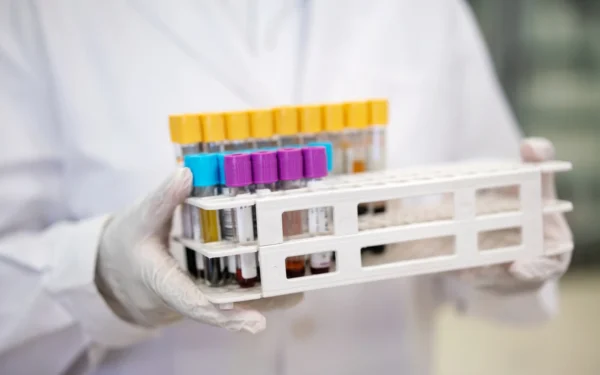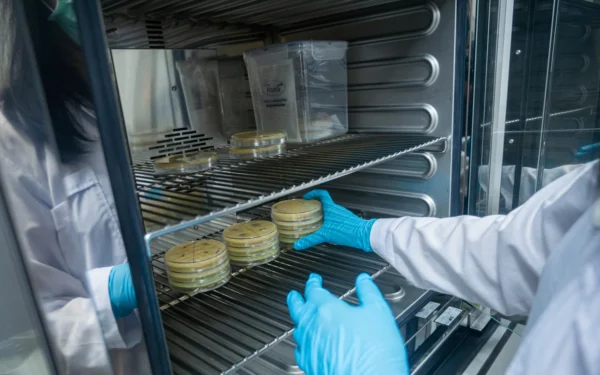As R&D labs become more digital and more complex, lab management software, such as Lab Information Management Systems (LIMS), has become an increasingly central tool in managing the new challenges that arise. But many labs still use software today that they adopted years ago when their processes and workflows looked very different.
The most common reason so many labs still use outdated data management software is that it’s hard to objectively assess the potential value of adopting a more modern solution compared to the cost of switching. When labs try to calculate ROI, it’s often relatively easy to estimate the hurdles involved in switching to a new system, but nearly impossible to quantify the potential return. So while this article explores how pharmaceutical research organizations can better evaluate both the costs and the potential returns of adopting new laboratory informatics systems, most of the focus will be on quantifying the returns.
The Cost of Switching Software
The common adage from IT departments worldwide is that software is sticky. Once users become familiar with a set of tools and invest their time in configuring them, entering data, etc., it’s very difficult to get them to switch to a new system. No matter how good the new system is, switching comes with a political cost, and can take much longer than expected.
In addition to this political cost, there’s the cost of initially configuring and customizing the software, as well as the cost of training users on the new system. And there may be lost productivity during the transition as users figure out how to use the system the way they want to.
Software licenses may also incur an increased cost, but not always. The software that’s best for your team may not actually be more expensive than your current solution.
The Return on Better Data Management Tools
The potential value of replacing your LIMS or other research data management tools depends on the limitations of your current system. Modern research lab management software can typically improve on legacy systems in one or more of the following areas, ordered from the most tangible to the most strategic:
- Increasing scientist productivity
- Optimizing inventory and reagent usage
- Shortening R&D timelines
- Reducing compliance risk
- Improving decision making
Below, we explore ways to quantify each of these sources of value.
Increasing Scientist Productivity
It is estimated that scientists in labs using legacy LIMS spend up to 50% of their week doing basic data entry and other process-related tasks. If a modern system that better fits their needs cuts this down even to 40%, that frees up one tenth of their overall time.
For every 10 bench scientists, that’s one additional scientist that you can put to work on an additional drug program to increase the number of shots on goal. So upgrading your data management software can increase your productivity by 10% or more.
Optimizing Inventory and Reagent Usage
Tracking and managing inventory is another time sink for scientists. Modern research management systems can significantly reduce this time and help scientists manage inventory more efficiently. With the high cost of reagents, which can make up 15-30% of a lab’s budget, a modern system that accurately tracks inventory can have a significant impact on research costs.
A modern inventory system will integrate with the rest of the research management platform to help scientists order in bulk at a discount, track expiration dates to ensure first-in, first-out usage and reduce unnecessary purchases that would otherwise go to waste. Perhaps, more importantly, they can ensure supplies will be ready when they’re needed, so experiments don’t need to be rescheduled until a shipment comes in.
Shortening R&D Timelines
In addition to reducing the number of hours that scientists spend entering and organizing data, a modern LIMS or other research management software can help scientists identify ways to shorten the program’s overall timeline. When it takes an hour to answer a key question, teams may put off a big, expensive decision until the next weekly meeting, or even longer. When scientists can’t easily analyze all the data in one place, they may run unnecessary experiments, or miss opportunities to take a simpler, faster approach.
While the R&D phase is typically shorter than the clinical phase of drug development, any delays are expensive. This is particularly true once a drug candidate has been patented, and the clock starts running. For a blockbuster drug that makes $1 billion per year, that amounts to just under three million dollars a day. Every day that the clinical trial is delayed means millions of dollars lost to the patent clock.
Reducing Compliance Risk
Good research management software will directly support regulatory requirements for an Investigational New Drug (IND) filing in the US or a Clinical Trial Application (CTA) in the EU. If your system hasn’t been designed with this in mind, it’s likely creating extra work for scientists preparing for clinical filings. And it’s increasing the risk of errors or omissions that could jeopardize approvals.
If you discover that data you were planning to use for an IND or CTA wasn’t prepared with the correct procedures and safeguards, you may have to rerun those experiments, delaying the application. And if you discover these issues after filing, that will delay things even more.
You should never take chances when it comes to regulatory compliance. If your current system isn’t supporting your team in this area, migrating to a system designed to ensure a successful filing will be worth the cost.
Improving Decision Making
This is the hardest source of value to quantify but has the highest potential. Most early pharma R&D is characterized by expensive decisions made with limited information. To some extent, this is unavoidable: The in vitro experiments that are feasible at this stage just aren’t sufficiently correlated with in vivo and in-human results as the scientists need.
But even so, many teams cannot leverage all the available data because their data management systems don’t make it easy. Instead, they look at one assay at a time or manually merge data in spreadsheets. So they don’t get the full picture of even what’s available at this early stage.
There’s no way to quantify exactly how much potential revenue is being lost by not analyzing all the data.
Conclusion
Calculating the ROI of your research lab management software is difficult because many of the most significant sources of value are mostly intangible. While it’s relatively straightforward to make a case based on increased scientist productivity or less waste on inventory and reagents, the more transformative value comes from things that are harder to measure directly—reduced timelines, lower compliance risk, and better decision making.You may never know how much faster you got to the clinic because you designed more efficient experiments, or which decisions had the most impact, powered by easier access to the data. But if your current systems aren’t providing the value you need, there’s a very good chance that migrating to more suitable research lab management software will yield a positive return on the investment.





